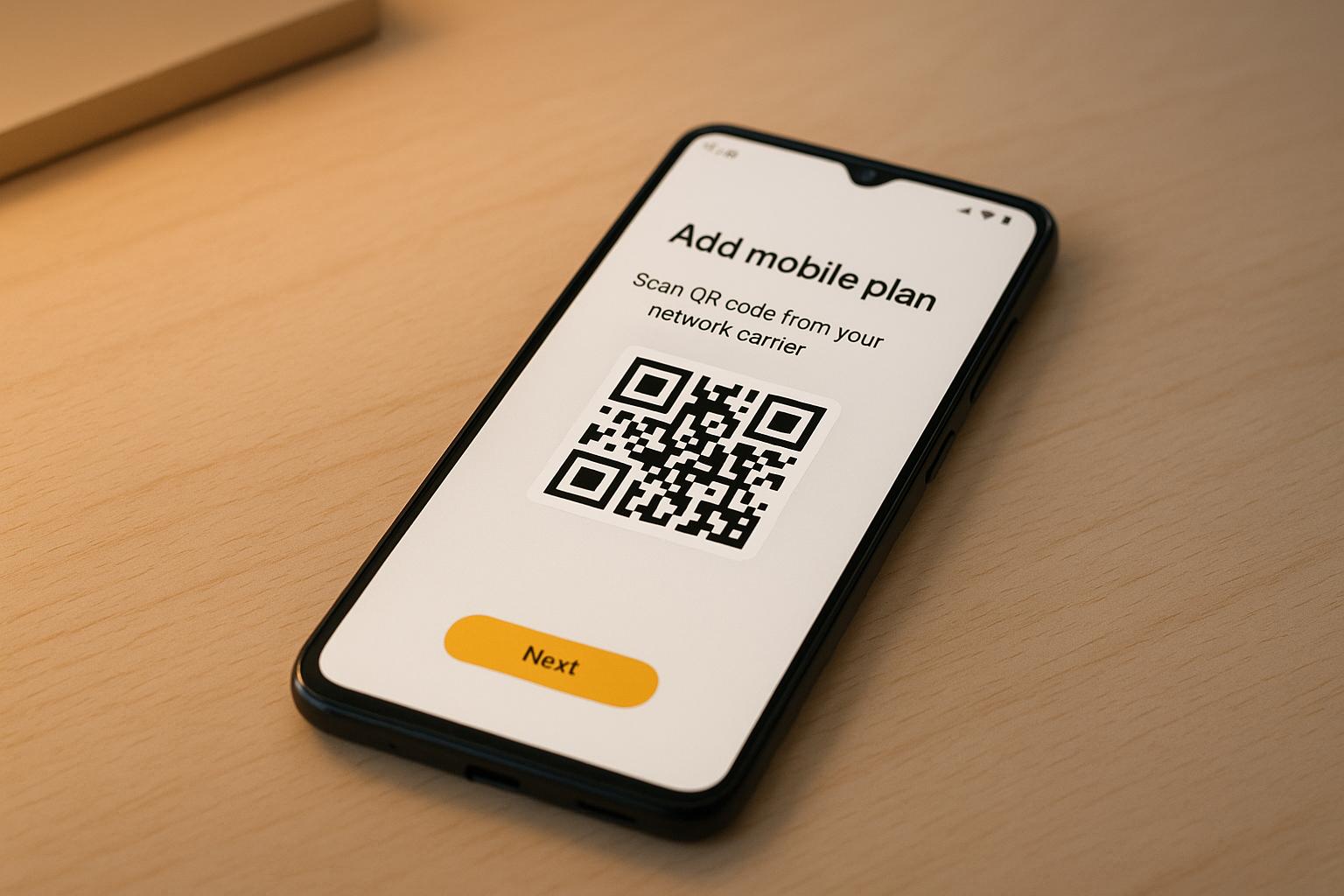How to Add a Second Phone Number with eSIM on Android
https://www.zimconnections.com/how-to-add-a-second-phone-number-with-esim-on-android/
 SHARE
SHARE
In today’s world of global travel and mobile connectivity, staying connected without the hassle of physical SIM cards is increasingly important. Enter eSIM technology – a transformative solution that allows you to switch between multiple numbers seamlessly, without juggling plastic cards. Whether you’re a tourist, digital nomad, or business traveller, this guide to setting up an eSIM on Android will help you unlock a more convenient, flexible, and cost-effective way to stay connected.
This article walks you through the process of adding a second phone number using an eSIM, explaining its benefits and functionality while offering practical insights to improve your mobile connectivity experience.
What Is an eSIM and Why Should You Use It?
An eSIM (embedded SIM) is a digital SIM that eliminates the need for a physical SIM card. Instead, it is programmed directly into your device, allowing you to activate a mobile plan remotely. You can store multiple eSIMs on your smartphone and switch between them easily. This is particularly useful for travellers who want to avoid high roaming charges or professionals managing multiple phone numbers for work and personal use.
Key benefits of eSIM technology include:
- Convenience: No need to physically swap SIM cards when changing providers or countries.
- Flexibility: Store multiple SIM profiles on your device and switch between them with ease.
- Eco-Friendly: Reduces plastic waste by eliminating the need for physical SIM cards.
- Cost-Effective: Use local data plans in different regions instead of expensive roaming plans.
How to Add a Second Phone Number Using an eSIM on Android
Below, we provide a clear, step-by-step guide based on the process demonstrated in the video. This guide will help you set up an eSIM on your Android device and add a second phone number.
Step 1: Obtain Your eSIM Details
Before you begin, you’ll need to get the eSIM details from your network provider. Most providers offer a QR code that you’ll scan to activate the eSIM. This QR code is often linked to your account and, in many cases, is prepaid for flexibility.
- Contact your network provider and request an eSIM activation voucher or QR code.
- Keep the QR code safe, as it contains sensitive information linked to your mobile plan.
Step 2: Access Your Phone’s eSIM Settings
To start the process of adding an eSIM:
- Go to Settings on your Android device.
- Navigate to Network & Internet or Connections (this may vary depending on your device).
- Select SIM Card Manager or Mobile Network Settings.
- Choose the option to Add eSIM or Set Up a New eSIM.
Step 3: Scan the QR Code
Your device will prompt you to scan the QR code provided by your network provider. Here’s how to do it:
- Use your Android’s camera to scan the QR code.
- The device will automatically detect and retrieve the eSIM details.
- Confirm the details, and allow the device to download the eSIM profile.
If no QR code is available, some providers may allow you to manually input the details. However, QR code scanning is usually quicker and more efficient.
Step 4: Configure Your eSIM Settings
Once the eSIM has been added to your device:
- Assign labels to your SIM profiles (e.g., "Work" and "Personal").
- Decide which SIM to use as your default for:
- Calls
- Text messages
- Mobile data
- You can also enable or disable features such as automatic data switching, which uses the optimal network for data.
Step 5: Activate and Test the eSIM
After configuration, activate the eSIM and test it:
- Ensure the eSIM is turned on in your settings.
- Make a test call or send a message to confirm that the eSIM is functional.
- Check the mobile data connection to ensure internet access works as expected.
Step 6: Manage Multiple eSIMs
With eSIMs, you can easily switch between multiple numbers without removing or replacing a physical SIM card. If you no longer need an eSIM, you can choose to delete or disable it from your device settings.
For those using both a physical SIM and an eSIM, many devices allow you to run both simultaneously or switch between them effortlessly.
Practical Insights and Tips for Using eSIMs
The video highlighted several practical points that can enhance your experience with eSIMs:
- Regional Restrictions: Some network providers may not support eSIM transfers between devices or regions. Always check with your provider beforehand.
- Prepaid vs Postpaid: Using a prepaid eSIM is often a safer and more affordable option for travellers, as it avoids unexpected bills for roaming or overage charges.
- Signal Strength Comparison: If you use multiple SIM profiles, compare signal strengths in different regions to determine which network performs better.
- Backup Your eSIM Details: Take a photo of the QR code or voucher for future reference. However, remember that sharing your QR code is like sharing your SIM card – keep it private.
- Provider Flexibility: Some providers offer advanced features, such as using the same number on multiple devices (e.g., a smartwatch and smartphone), making it easier to stay connected across devices.
Common Misconceptions About eSIMs
To clear up potential confusion, let’s address some common misconceptions:
- "Only one eSIM can be used at a time": Most devices allow you to store multiple eSIM profiles and switch between them as needed.
- "eSIMs are permanent on the device": eSIMs can be deleted and re-added to another device, depending on your provider’s policies.
- "eSIMs are complicated to set up": The process is straightforward, taking only a few minutes with a QR code.
Key Takeaways
- eSIM technology offers a flexible, eco-friendly, and cost-effective way to manage multiple phone numbers on one device.
- Adding an eSIM to your Android device is a simple process involving scanning a QR code, configuring settings, and activating the eSIM.
- Prepaid eSIMs are ideal for travellers, offering affordable access to local networks without the risk of high roaming charges.
- Store multiple eSIMs on your device and switch between them effortlessly without physically swapping SIM cards.
- Protect your QR code and eSIM details, as sharing them is equivalent to giving someone access to your SIM card.
- Check your provider’s features, including regional compatibility and multiple-device options, to make the most of eSIM technology.
Conclusion
eSIM technology is revolutionising the way we connect, offering unparalleled flexibility for travellers, remote workers, and anyone managing multiple phone numbers. By following the steps in this guide, you can confidently set up and use an eSIM on your Android device, enjoying a seamless and hassle-free mobile experience.
As eSIM adoption grows globally, its benefits will only continue to expand, making it an essential tool for modern connectivity. Whether you’re exploring new destinations or optimising your work-life balance, eSIMs empower you to stay connected effortlessly. Embrace the future of mobile technology today!
Source: "How to Add Second Phone Number with eSIM on Android Devices" – ION HowTo, YouTube, Aug 25, 2025 – https://www.youtube.com/watch?v=tl6SYSgf6KA
Use: Embedded for reference. Brief quotes used for commentary/review.









































































































































































































